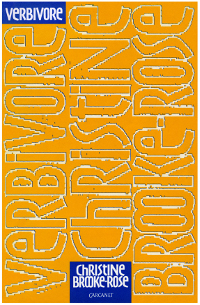This article is taken from PN Review 257, Volume 47 Number 3, January - February 2021.
Pictures from the Rylands Library, cover
The Visible Author: Picturing Christine Brooke-Rose in the Art of Stephen Raw

Early in my time as Carcanet’s archivist I arrived at the Corn Exchange one day to assess some material the Press had set aside for transfer to their archive in the Rylands Library. As I let myself in I encountered an elderly lady nonchalantly perched on the windowsill, her shape silhouetted against the backdrop of Manchester Cathedral.
‘Get Stella to tell Christine about the archive’ called Michael Schmidt to his PA Pam Heaton from his office. Pity flickered across Pam’s face as she introduced me to Christine Brooke- Rose, a name I knew well. I was aware of her work in experimental fiction and her links to the Oulipo group. I’d box-listed files of her manuscripts and proofs in the archive. I’d seen up close her use of ‘startling typography’ (Helen Reyes) and the ‘graphic disruptions’ (Glyn White) she employed to destabilise the biblio graphic conventions of the arrange ment of texts on the page. I’d observed first-hand how she presented language as a system ‘thru which one sees the real’ (Joanna Walsh). I had also listed her letters and their forthright and often fiercely irascible tone lived long in the memory.
A hand-scrawled note on top of one of the towers of paper put aside for my attention had caught her eye. ‘Archive or bin?’ it questioned. Amused, it prompted the novelist and former code-breaker from Bletchley Park to launch a battery of questions at me: What criteria did I use to determine what, or who, went in the bin? What of the silences of those not retained in the archival record? And, most insistently of all, who, within the archive, speaks? It was quite a relief when she left to catch her train.
Now, when this meeting pops into the retro-visor of memory Christine Brooke-Rose materialises in the shape of the letterforms created by the textual artist Stephen Raw for the cover of her book Verbivore (shown here). Keen to reflect her approach to experimental writing in his own, Raw recalls how he, ‘drew the title and author lettering very small, faxed it to myself and then massively enlarged the result’, lifting the white letters with a ‘modest blue dropped shadow’ and then ‘daringly cropping’ the text [FAR] too close to the edge for modern printers!’ (Stephen Raw).
With sharply serrated teeth-like edges yet also simulating algorithmic, computer-generated forms, Raw’s letters skillfully operate as signifiers loaded with meaning (White) to create an abstract portrait of Christine Brooke-Rose. Conjuring an essence, if not the surface appearance, of the person I briefly encountered that day they make visible something of the character of the author of twenty-six formidably innovative books, ‘one for every letter in the alphabet’ (Walsh).
Image kindly supplied by and reproduced with the permission of Stephen Raw.
This article is taken from PN Review 257, Volume 47 Number 3, January - February 2021.
